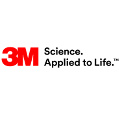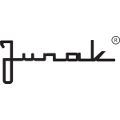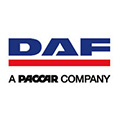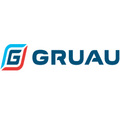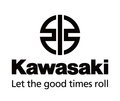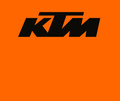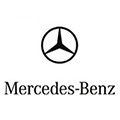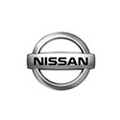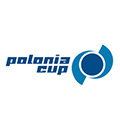04_18 Google Maps as a tool for building customer relations and monitoring customer service quality at chains branches.
Google Maps is one of the most popular services that combines the functions of a map and sat nav system with social media capabilities owing to the Local Guides programme. Consumers post a growing number of ratings for all sorts of points of interests marked on the maps, and this applies dealerships and garages as well. The structure of the ratings (a scale of 1 to 5 with the option to post comments), their number, and the provided date reference allow to generate quantitative customer satisfaction indicators for individual establishments, monitor the changes over time, aggregate data at the regional level or across the given brand’s entire chain, as well as to make comparisons against analogous indicators for competitor brands (total market and local micro-markets). On the other hand, qualitative analysis of the comments allows to reveal the strengths and weaknesses of the individual branches, as well as to draw conclusions on what aspects of the offer and service are particularly important to customers.
The number of ratings posted has doubled over the last three quarters (Q3 17 - Q1 18).
For the purpose of this publication, Kantar TNS Data Science team analysts assayed 367 dealerships and official garages of the VW Group, Toyota, Renault, and Hyundai. The selection of brands is diversified in terms of image only, whereas the findings outlined below are presented solely for illustrative purposes. In total, customers posted 32.5 thousand ratings of the analysed dealerships, which amounts to roughly 90 ratings per dealership, with major dealerships in bigger cities having accrued approx. 300 such ratings (as of 21.04.2018).
Although some of the ratings come from as many as 7 years ago, the vast majority of these opinions (about 80%) were posted on Google Maps over the last year. The high growth rate is further corroborated by the fact that there were 5.3 thousand ratings in Q3 17, followed by 6.6 thousand in Q4 17, and slightly over 10 thousand in Q1 18 (for the 367 analysed dealerships alone).
It’s high time to begin monitoring brands in Google Maps.
Both the website version (for PCs) and the mobile app play an important role in virtually all Polish web users’ interactions with the web (in other words, the vast majority of the automotive sector's customers use the service). Across their participation in various research project carried out by Kantar TNS, roughly half these consumers declared that they used Google Maps at least once a week (either on the computer, or on their mobiles), with barely several percent not using GM at all. Also Gemius statistics show that Google Maps are in the lead, with a weekly reach in excess of 10 million users. It is safe to say that virtually all active internet users are familiar with Google Maps and know how to use them. What is more, most smartphone users have the app pre-installed on their handsets.
One aspect is the immense popularity of the service in general, whereas another is the Local Guides program that Google has been developing since approximately mid-2017. The underlying idea is to build an active community of people who have visited a given establishment (which is confirmed via location services) and can share an opinion about it. To encourage this activity, Google relies on a highly diversified and continuously updated range of incentives (including gamification mechanics).
It seems reasonable to assume that over time Google Maps will evolve into a strong social network based on a highly popular and useful map and navigation function. This strength is going to come from the fact that it combines a rational aspect (a practical map) with emotional ones (sense of affiliation). In turn, this kind of value will need to be monetised at some point, which is going to bring about a new advertising platform.
A simple tools with considerable analytical capabilities
The structure (components) of an individual rating of a given establishment marked on the map is nothing short of trivial:
- a rating of between 1 and 5 stars
- an optional comment (usually a rationale for the customer's satisfaction or dissatisfaction)
- the date when the opinion was posted (relative, e.g. ‘two months ago’),
- info about the poster – name and surname (or what they provided as such during their Google account registration), whether or not they are a Local Guide, how many ratings and images they have posted, and also what other places they visited and how they rated them (hidden after a break that can be accessed by clicking adetailsbutton).
A single establishment marked on the map can have between several and several hundred such ratings (as is the case with car dealerships) – 500 to 1000 for the most popular petrol station chains, or even several thousand for some restaurants or malls. This gives the person in charge of the given venue some data to work with. More importantly, they can respond to customer ratings – e.g. thank them for a favourable opinion, or invite them for another visit to settle misunderstandings or offer reimbursement for potential omissions.
However, the ‘real fun’ starts when you’re dealing with a chain of establishments in a given area. For example, throughout the last several months Kantar TNS has been analysing opinions on petrol stations throughout Poland – several leading brands amounting to 3.5 locations on the map, and tens of thousands of ratings every month. It goes without saying that opinions on car dealerships of a given brand (along with selected competitors or independent garages) can be collected the same way). The only prerequisite is that their location needs to be marked on Google Maps, and customer rating have to be available.
The amount of data is sufficient (several thousand ratings per brand for the dealerships in question) to calculate not just the general indicators for the brand, but also to break them into subsequent months (for the most recent 11 months, with an annual presentation for older data).
What indicators can be monitored:
- for individual dealerships (with the option to aggregate data at the regional level or as a total for the brand): arithmetic average of the 1-5 ratings, share of "5" scores (highly favourable), and share of "1" scores (or "1" and "2” together), or the least favourable scores.
- for the entire chain: all sorts of dealership rankings, with a list of dealerships that score above or below the local competitor benchmark, dealerships with increasing/ dropping ratings over an analysed period, etc.
For example, the share of "5" scores of a given brand’s dealerships in the individual months ranged between 54% and 75%, whereas the share of "1" scores varied from 5% to 15%. Furthermore, one brand continued to display a growth trend, whereas another one began to fall after an initial growth period.
In a nutshell, the Google Maps service is growing as a new, significant touchpoint between customers and brands as well as their trade partners. It seems that it might be reasonable to begin looking at the data that this service provides in order to avoid missing the crucial moment after which moderating the discourse and managing one’s establishments in the service is no longer going to be feasible. Furthermore, the data seem to be interesting supporting material for findings from standard satisfaction surveys and mystery shopper audits, and can broaden the available outlook on dealer’s network performance.
Andrzej Olękiewicz, Data Science Consultant
andrzej.olekiewicz@kantar.com

